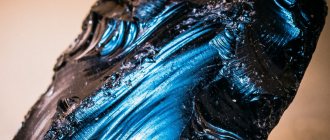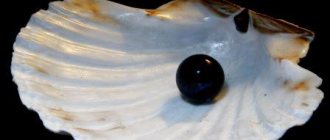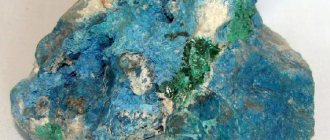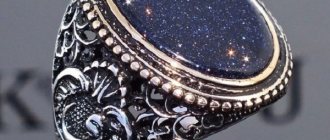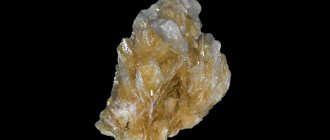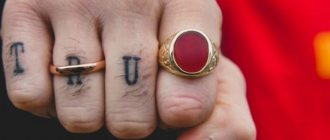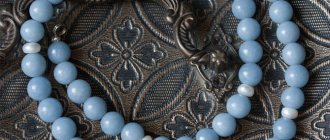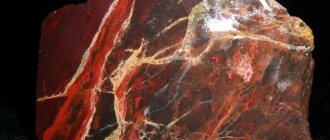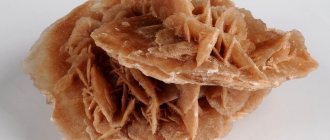- Which: Semi-precious;
- Place of Birth: -;
- Colors: Black, green, white, blue or red.;
- Mohs hardness: 7.5-8.5;
- Transparency: Transparent or translucent;
- Density: 6.5-10 g/cm3;
- Formula: Zr0.8Ca0.2O1.92;
- Suitable person according to zodiac sign: Everyone;
- How much does it cost: from 1 dollar per gram.
The limitation of natural resources has led humanity to the creation of their synthetic analogues. Scientific developments and jewelry making were not spared.
In 1968, an artificial double of the diamond was developed - the cubic zirconia stone. Its similarity to the precious standard has given rise to many fraudulent schemes, which has provoked a negative attitude towards the valuable scientific invention.
History of invention
The artificial stone owes its name to the Physical Institute of the Lebedev Academy of Sciences (FIAN), where it was created. Initially, the goal of the research was to obtain a material with certain optical properties necessary for laser equipment.
But already in the early 70s of the last century, cubic zirconia caused panic in foreign jewelry markets: a stone almost identical to a diamond cost a penny. In the 1990s alone, crystals with a total weight of 50,000,000 carats were produced worldwide. Since then, production rates have only increased.
Origin story
The stone was discovered by scientists trying to obtain the material necessary to equip a laser installation. After numerous experiments, they managed to obtain unique shiny crystals. This stone was called cubic zirconia because it was obtained at the Physics Institute, which is a branch of the Russian Academy of Sciences. The abbreviated name of the institution is FIAN. Gradually, the stone migrated into the hands of jewelers, who began to use it to create jewelry.
Initially, the crystal after its invention was used only for laser systems. It has some unique parameters required specifically in this regard:
- infusibility;
- strength;
- good resistance to chemical influences;
- excellent refraction of light.
Confusion in terminology
The term “cubic zirconia” is used only in the CIS countries and Eastern Europe.
In the global jewelry community, other names are used to describe the insert in a product:
- jewellite;
- zirconite;
- daimonsquay.
Cubic zirconia is incorrectly called zirconium. Zirconium is a metal, and only its cubic dioxide has a crystal structure.
In addition, there is zircon, a natural semi-precious stone. A mineral of igneous origin is several times more expensive than cubic zirconia.
Cubic zirconia is also often confused with Swarovski crystals, which are a proprietary type of crystal.
Where and how is stone mined?
Artificial analogues of diamond do not require activities related to their extraction. There are no deposits of this crystal, since it is obtained artificially.
Several laboratories have been opened that grow cubic zirconia in Russia, European countries and the USA. But there are also many underground workshops where it is produced, so you always need to pay scrupulous attention to the quality of the stone you are purchasing.
Appearance and color options
Cubic zirconium dioxide is colorless, but technology allows it to be given in more than 40 different shades.
Most Popular:
- yellow;
- pink;
- green;
- purple;
- brown with a golden tint.
In addition, a color changing effect is possible, allowing you to imitate rare and very expensive alexandrite. At the same time, scientists still cannot obtain cubic zirconia of emerald green color.
Types of stone and their characteristics
The difference between a stone and a natural diamond is that it has different color shades. Although it is usually completely transparent, when grown in the laboratory the raw material is enriched with certain metals, they eventually form a certain color:
| Addition of Niodymium produces purple color | Adding chromium gives green color | Addition of cerium gives yellow color | Addition of erbium gives pink color | Adding titanium gives a golden color |
By selecting various combinations from these options, scientists were able to obtain stones of many shades. Now jewelers offer jewelry with a golden-yellow color, similar to topaz and citrine, blue or blue, like aquamarine or sapphire, red, reminiscent of a ruby, black, like a diamond, morion, purple, similar to alexandrite. The only thing that couldn’t be reproduced was the emerald green tone. When chromium is added, a golden-green hue is achieved, similar to peridot rather than emerald. Otherwise, the stone is capable of repeating the colors of almost any precious gem.
Although what is more important is that it has an amazing play of light, which surpasses even a diamond in its optical parameters. Therefore, the decision of jewelry craftsmen to actively use the mineral for insertion into jewelry was justified.
Precious or not?
Cubic zirconia enchants with its excellent play of light and perfect purity. In appearance, it is in no way inferior to precious stones and is difficult to distinguish from a diamond. Cubic zirconias are widely used in jewelry and make it possible to create real masterpieces, each of which has considerable value. All this leads to the question, is cubic zirconia a gemstone or not?
Cubic zirconia is often called an artificial diamond. But its origin and low cost of production devalue the magnificent appearance of the crystal - it is not at all rare. This means that cubic zirconia cannot be a precious stone.
Cubic zirconia: description
Cubic zirconia is not a gemstone, as the crystals are grown artificially. This process is facilitated by zirconium dioxide. When the resulting mineral is carefully processed, it acquires a shine that makes it easy to confuse it with a diamond. Moreover, the similarity is manifested both in appearance and certain physical parameters. Although in the USSR this artificial diamond was long called cubic zirconia, the stone also received other names:
- zirconite;
- jevalit;
- daimonsquay.
Even now, the technology for growing this stone has not changed at all. The technology for producing cubic zirconia discovered by Russian scientists remains the best - it allows one to obtain crystals weighing almost 4 kg. It was only slightly modified and now industrial production is available to many countries.
How to distinguish cubic zirconia from a diamond?
The similarity of cubic zirconia with a diamond has led to it being used as a counterfeit of its precious “brother,” but there are several ways to help distinguish them:
- Crystal purity. Cubic zirconia can only imitate a diamond of very good quality, without internal cracks or defects. Precious stones of perfect purity, especially large ones, are quite rare in nature. So if you see an inexpensive crystal with absolutely no flaws, it means it is cubic zirconia.
- Quality of cut. Upon closer examination through a magnifying glass or microscope, you can notice that cubic zirconia crystals have blurred and double edges. However, if the fake is of good quality, the cutting can also be performed at the highest level.
- Dirt-repellent properties. If you drop a little oil on the surface of a diamond, it will easily flow down the surface. Imitation tends to accumulate dust, grease and dirt, which is why it loses its shine over time.
- Weight of the stone. Zirconium dioxide has a higher density than diamond. Two stones of the same size can be weighed: the one that turns out to be lighter is the diamond. True, this method is difficult to implement if the crystals are fixed in the product.
- Hardness. Diamond is the hardest of all minerals; it can cut glass, but imitation will only leave a mark on the surface. In addition, a diamond can scratch cubic zirconia, but cubic zirconia cannot scratch a diamond.
- Thermal conductivity. A natural stone can be recognized by pressing it to the cheek - the surface of the mineral almost always remains cold. More accurate identification is provided by diamond testers - devices that determine the thermal conductivity of a stone, and based on the obtained values, they can easily recognize an imitation.
Unfortunately, there are such skillful fakes that none of the above methods gives complete confidence in the authenticity of the diamond. An expert opinion and certificate for a stone can only be issued by a gemological laboratory.
Medicinal properties
Cubic zirconia stone has healing properties, so it is suitable for people with certain diseases. For example, it is believed that such a mineral can absorb disease or infection from its carrier.
In case of cancer, it can stop the development of the tumor. Often cubic zirconia jewelry is given to women before childbirth, as they believe that they can reduce the level of pain during the birth of a child.
Attention! However, it is important to know that after recovery the stone must be immediately replaced with a new one. This step will help eliminate the possibility of negative energy accumulating and returning back to the wearer.
In addition, cubic zirconia can improve the healing properties of other precious minerals. That is why you can often find stones such as sapphire, pearl, diamond or emerald in jewelry.
Who is suitable according to their zodiac sign?
It is generally accepted that cubic zirconias are suitable for almost all zodiac signs. Before purchasing, try to listen to your own intuition - it will help you choose a stone that matches your inner self.
In addition, there are recommendations on how to choose the shade of a stone according to your horoscope:
- Capricorn. For people born under the sign of Capricorn, stones of dark colors are recommended - rich green, gray and even black. Such shades are combined with their pragmatism and gloomy character. But muted colors do not enhance the gloominess of their owner, but, on the contrary, allow one to consider one’s own positive traits.
- Aquarius. Aquarius, like other signs belonging to the element of Air, is characterized by lightness and frivolity. These character traits are best emphasized by transparent, light blue stones. For a girl born under this sign, we can recommend platinum or silver earrings with such an insert as an ideal decoration.
- Fish. People born under the sign of Pisces are suited to all shades of stones reminiscent of the sea - blue, green, turquoise. Even a simple ring with a central cubic zirconia of this color can become a talisman for them, protecting them from the “evil eye” and envious people.
- Aries. If you decide to buy Aries jewelry with a cubic zirconia insert, pay attention to warm, rich colors - green and yellow. They have a calming effect, which is so necessary for overly hot-tempered representatives of the element of Fire. The hardness of their character also goes well with the hardness of cubic zirconia.
- Calf. Taurus is a zodiac sign with a soft, calm, sentimental disposition. If you give him the opportunity to choose a stone on his own, he will certainly choose yellow, green, and brown colors. They harmoniously combine with his inner “I” and give confidence in his own abilities.
- Twins. For Gemini, the ideal stone would be amethyst. It is able to express the inclination of this zodiac sign to everything mystical and mysterious, improve intuition, and also protect its owner from ill-wishers. For daily wear, amethyst can be replaced with purple cubic zirconia.
- Cancer. Cancer is one of the most sensitive signs of the zodiac. He needs strong protective amulets, especially those made of silver. Transparent or blue cubic zirconia would be appropriate as inserts. Stones of these shades promote high mental activity and protect against diseases.
- A lion. Those who love attention and bright colors - Leos - are recommended to wear jewelry with rubies and garnets. This zodiac sign is a bright representative of the element of Fire, and its powerful energy can be enhanced with red or pink stones, including cubic zirconia. Such crystals will look especially good in a gold frame.
- Virgo. Virgos are a zodiac sign with a complex character. He is characterized by pragmatism, accuracy and mysticism at the same time. To emphasize these properties, Virgos are recommended to wear stones in white, green and lavender shades.
- Scales. Libra is a sign of the Zodiac, prone to inconstancy everywhere and in everything. Turquoise or dark blue stones can evoke a sense of peace of mind and calm the nervous system. The only exception is Libra, born from October 14 to 23: astrologers recommend that they wear exclusively natural stones.
- Scorpion. The patron of this sign is Mars, which gives Scorpios irrepressible energy. Talisman stones that can strengthen it are dark red garnet, tourmaline, ruby or similar cubic zirconia. They have a beneficial effect on the functioning of the cardiovascular system and also bring good luck in love. In addition, Scorpio is impressed by crystals with a color-changing effect, which have the same strong energy as himself.
- Sagittarius. As a true representative of the element of Fire, Sagittarius is capable of a flurry of emotions and feelings. But his energy must be directed in a creative direction. This is facilitated by stones of all shades of blue - from soft blue to cornflower blue, reminiscent of Kashmir sapphire.
Cubic zirconia does not have any regulations or restrictions regarding the names of its owners.
Areas of application of cubic zirconia
The mineral is actively used in jewelry production. Thanks to its high-quality cut, it is sometimes difficult to distinguish it from a noble diamond. The most popular are light, somewhat yellowish shades, although many crystals of different colors are also produced. The cost of jewelry with them is much lower, but it looks great.
In addition to the jewelry industry, this artificial gem is actively used in various production processes.
Helpful information
Since it has good density and high hardness, cubic zirconia is practically irreplaceable in industries such as medicine, optics and radio electronics.
It is used to make high-quality cutters for processing glass, all kinds of optical instruments, and high-precision surgical scalpels. The lab-grown stone is highly resistant to chemical attack, a property highly valued in the steel industry.
Magic properties
Unlike natural minerals, cubic zirconia initially does not carry any energy - neither positive nor negative.
It has no defects, cracks, and is perfectly transparent. It is a clean vessel that needs to be filled. The magical properties that cubic zirconia will have depend on its owner. The crystal is able to remember any emotions, thoughts, events. It can be turned into your own amulet if you wear it at moments of success and achievements in life.
At the same time, the stone cannot be given into the wrong hands, even temporarily. If you were given a product with cubic zirconia that has already been used, you need to carry out a cleansing procedure: put it in a vessel with spring water or hold it over a flame.
Cubic zirconia is called the stone of loneliness. He is forced to constantly be in the shadow of his “big brothers” - precious and semi-precious stones, to act as an imitation and counterfeit. Some esotericists believe that he personifies duplicity and falsehood, but this is not so.
The damaged reputation of cubic zirconia is a consequence of human actions aimed at easily making a profit by deception.
Cubic zirconia brings good luck:
- travelers;
- careerists;
- scientists;
- any lonely people.
It helps to do a large amount of work in a short time and has a beneficial effect on the overall tone of the body. At the same time, synthetic imitation diamonds are not recommended for people with clear leadership qualities.
What is the price
The price of cubic zirconia depends on its quality and color. And the finished product costs differently depending on the design and frame.
Jewelry prices
A gold ring with cubic zirconia can be purchased for 6–7 thousand rubles, earrings – for 3–14 thousand rubles. Silver products will cost 2–3 times less.
View this post on Instagram
Publication from ADAMAS Jewelry Salon (@adamas_ru) February 14, 2021 at 8:03 PST
The value of cubic zirconia
The average price of 1 carat of cubic zirconia fluctuates around $5 . Compared to a diamond (5 thousand per carat), this is a thousand times cheaper.
What stones does it go with?
A laboratory-grown crystal can be combined with any natural stones. From a decorative point of view, the most versatile is colorless cubic zirconia - it sits well alongside transparent topazes, amethysts, citrines, and garnets. Surrounded by small cubic zirconias, each of these stones will shine brighter.
The proximity to cubic zirconia also enhances the energetic impact of natural minerals. Any piece of jewelry that combines a precious stone and an artificial one will be a powerful talisman. It must be worn with caution.
Physicochemical characteristics
Cubic zirconia is an artificial material. The basic chemical formula of zirconium dioxide is changed by the components introduced during the synthesis of crystals.
cubic zirconia
The material is unstable, therefore it is supplemented with oxides of calcium, yttrium, and manganese. The structure of the crystal lattice and appearance resembles a diamond.
| Formula | Zr0.8Ca0.2O1.92 |
| Color | Yellow, orange, red, green, purple, pink, golden brown |
| Shine | Diamond |
| Transparency | Transparent |
| Hardness | 7,5—8,5 |
| Cleavage | Absent |
| Kink | Uneven |
| Density | 6.5-10 g/cm3 |
Jewelry
Availability and wide range of colors have ensured cubic zirconia's high popularity in jewelry. Artificial stone is found in products made of silver, gold, and platinum.
It can favorably set off the central gem in a carmesine frame or even sit next to a diamond - however, the latter combination is considered unethical.
However, cubic zirconia allows you to create jewelry of high artistic value, comparable to works of art.
This is an excellent educational material for novice jewelers, which is easy to purchase at hardware stores. The synthetic analogue gives everyone the opportunity to buy bold, stylish, unusual products or restore their favorite jewelry for a low fee.
Charms with cubic zirconia
The ability to accumulate and multiply energy makes it possible to use the crystal to create various amulets.
The most common of them:
- horseshoe;
- scooping spoon;
- Tibetan knot of happiness;
- Four-leaf clover;
- star of Erzgamma.
There are also pagan amulets with cubic zirconia inserts. Thanks to crystals, their protective effect is enhanced.
Care
Products with cubic zirconia should be wiped with a damp cloth and protected from exposure to cosmetics and chlorine. It is better to remove such jewelry while doing housework.
To extend the life of the stone, it is worth protecting it from possible scratches and mechanical damage. It is advisable to store jewelry in a closed case.
How to wear and care
Like any stones, cubic zirconias become dirty, dull, and dark when worn. But care is not difficult.
Earrings with cubic zirconia
To make a crystal shine, the following methods are suitable:
- give it to a jeweler to clean;
- use a jewelry cleaning solution;
- soak in soapy water, rinse with clean water;
- cover the stone with toothpaste, remove the remains with flannel or cotton wool;
- dilute ammonia in water (1:6), immerse the crystal for 9–11 hours, rinse in water, dry.
The stone does not tolerate cosmetics, household chemicals, and absorbs oils. Jewelry is put on when makeup is applied. Take it off before doing housework or going to the shower.
The stone has negative characteristics. Easily scratched, vulnerable to wear and chips, and greenish-yellow hues from the sun. Over time, “clouds” appear in the crystal. The effect is known as optical degradation.
How to care for stone
Earrings with cubic zirconia
This may seem strange, but jewelry owners do not always know how to properly care for them. Often jewelry lovers do not follow even the most basic care rules. This leads to fading and darkening of the jewelry.
What you need to know:
- Cubic zirconia does not like strong chemicals. And perfume, by the way, too. Spray them before you put on your jewelry.
- A beautiful, almost diamond-like, artificial stone does not have its strength, and therefore is very afraid of impacts and falls.
- Like natural stones, these crystals lose their luster. Cleaning cubic zirconia at home is not difficult - all you need is a soap solution and a cloth.
If you don’t have a suitable (not harsh) soap, you can clean it with alcohol. Just take it not in its pure form. Dilute 1:5 with water. Then immerse the stone in the liquid and leave it for several hours. Remove dirt with a brush.
